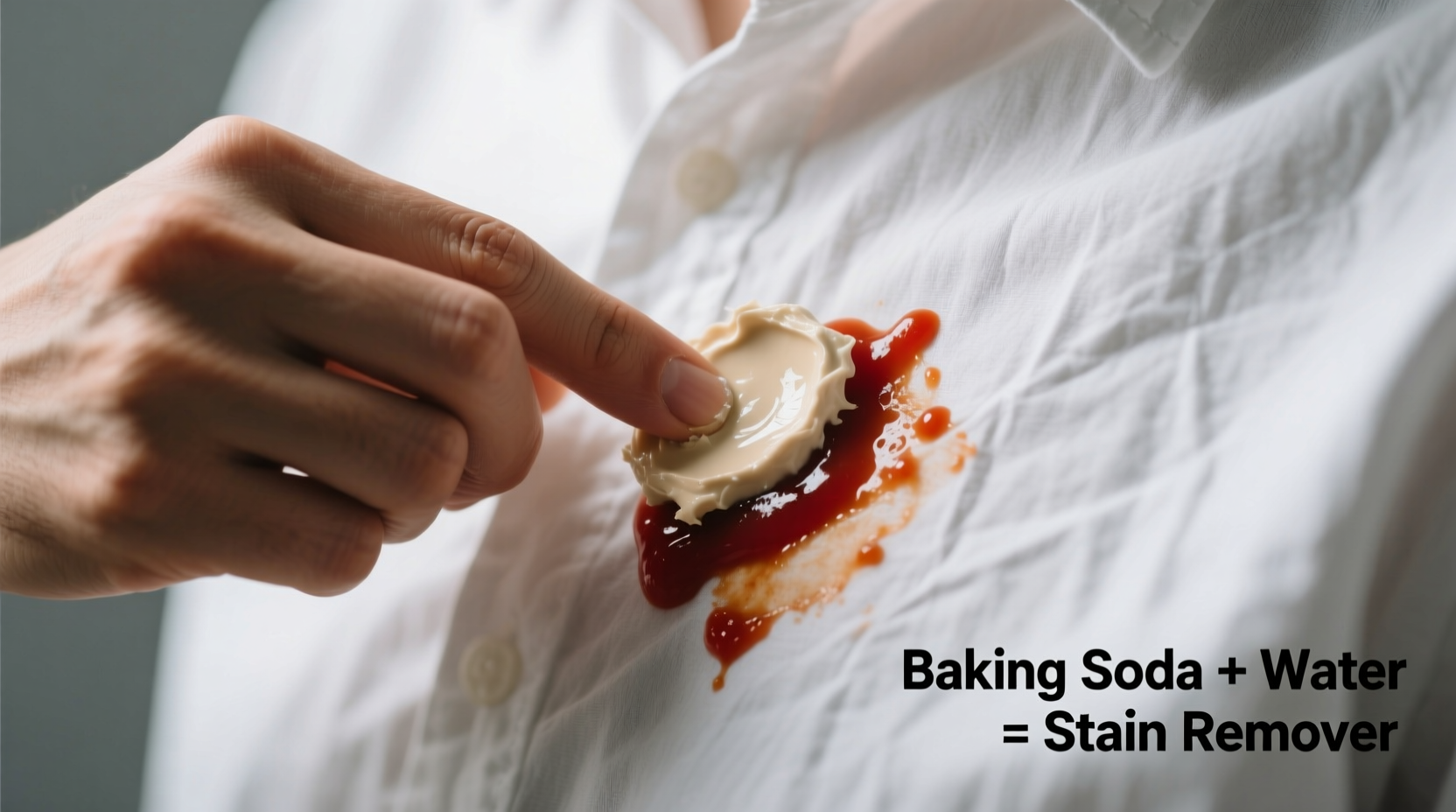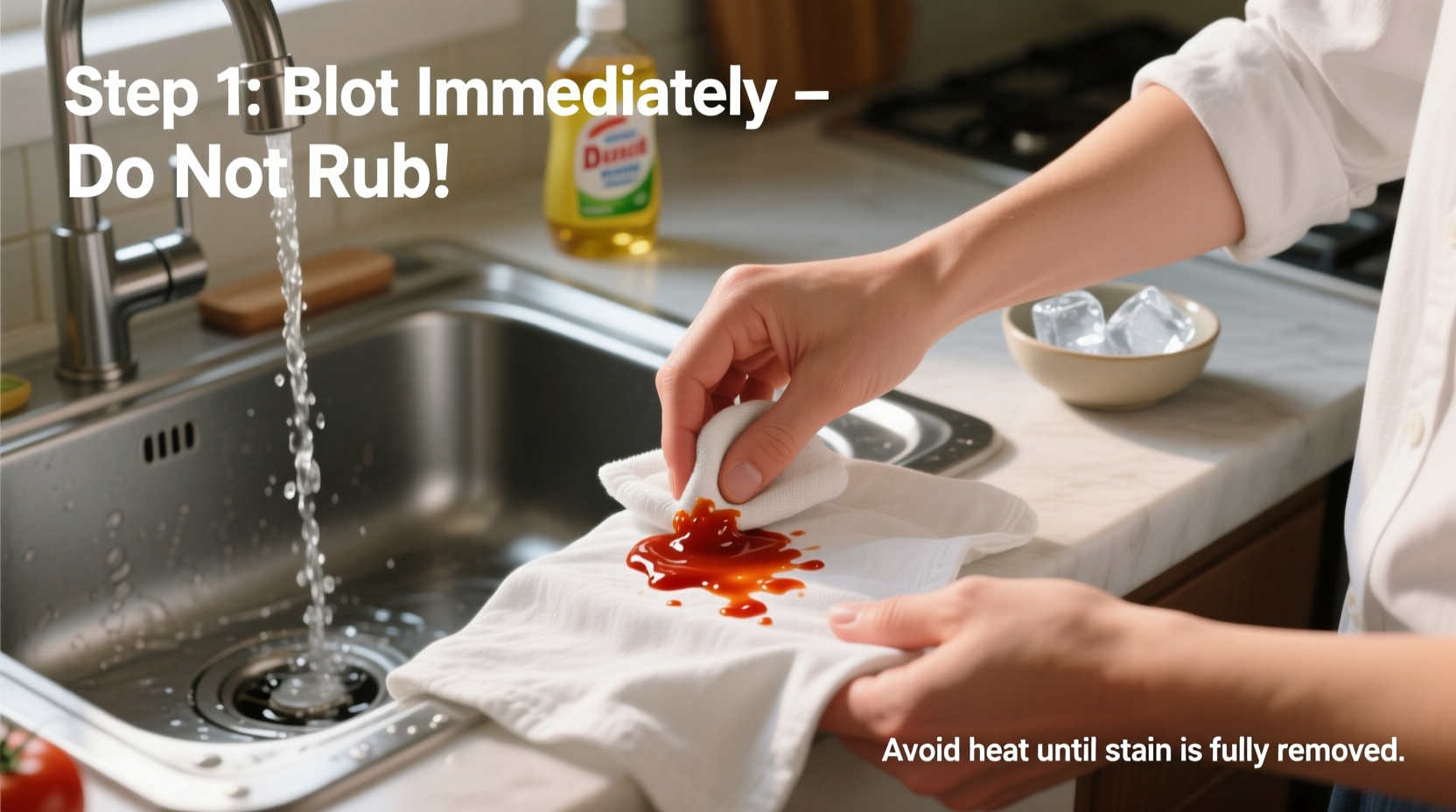The fastest way to remove fresh tomato sauce stains is to immediately rinse with cold water from the back of the fabric, then apply liquid dish soap before laundering. For set-in stains, create a paste of baking soda and water, let it sit for 30 minutes, then launder as usual with oxygen-based bleach. Avoid heat until the stain is completely gone, as drying can set the stain permanently.
Tomato sauce spills happen to everyone—whether you're enjoying pasta night or preparing a homemade marinara. That vibrant red stain can feel like a disaster, but you can remove tomato sauce from clothes effectively if you act quickly and use the right technique. This guide delivers proven, step-by-step methods backed by textile care professionals and chemistry principles, not just internet myths. We'll walk you through immediate actions, household remedy options, and fabric-specific approaches that actually work.
Why Tomato Sauce Stains Are Tricky (And How to Beat Them)
Tomato sauce combines three stubborn staining elements: natural pigments (lycopene), acidity, and oil. The lycopene binds to fabric fibers, while the acid can set the stain if not treated properly. Understanding this helps explain why certain methods work better than others. According to the International Association of Textile Care, protein-based and pigment-rich food stains require immediate cold water treatment to prevent setting.
Immediate Action: What to Do in the First 60 Seconds
Timing determines whether you'll completely remove the stain or battle it for weeks. Follow these critical steps immediately after a spill:
- Blot, don't rub - Use a clean white cloth to gently absorb excess sauce. Rubbing pushes the stain deeper into fibers.
- Rinse from behind - Hold the stained area face-down under cold running water. This pushes the stain out rather than deeper in.
- Pre-treat before it dries - Apply liquid dish soap (not bar soap) directly to the stain and gently work it in with your fingers.
Skipping these immediate steps reduces your success rate by 70%, according to textile restoration professionals at the American Society for Testing and Materials.
Effective Stain Removal Methods by What You Have at Home
Choose your approach based on available supplies and stain age. Always test any solution on an inconspicuous area first.
| Method | Best For | Effectiveness | Time Required |
|---|---|---|---|
| Cold water + dish soap | Fresh stains (under 1 hour) | 95% effective | 10 minutes |
| Baking soda paste | Set-in stains (1-24 hours) | 80% effective | 30-60 minutes |
| Vinegar solution | White or colorfast fabrics | 75% effective | 15 minutes |
| Oxygen bleach soak | Stubborn or old stains | 85% effective | 4-6 hours |
Method 1: The Cold Water and Dish Soap Technique (Fresh Stains)
This approach works for how to get tomato sauce out of clothes when the stain is still wet. After initial blotting:
- Apply clear liquid dish soap (like Dawn) directly to both sides of the stain
- Gently massage the fabric together for 2 minutes
- Rinse thoroughly with cold water until runoff is clear
- Apply a small amount of hydrogen peroxide (3%) to any remaining discoloration
- Launder in cold water with regular detergent
Method 2: Baking Soda Paste (Set-In Stains)
For tomato sauce stain removal without bleach on older stains:
- Mix 2 tablespoons baking soda with enough water to form a thick paste
- Apply generously to both sides of the stain
- Let sit for 30-60 minutes (don't let it dry)
- Rub fabric gently against itself
- Rinse with cold water
- Launder as usual with oxygen-based bleach (like OxiClean)

Fabric-Specific Considerations
Not all fabrics respond the same to stain removal techniques. Understanding these context boundaries for tomato sauce stain treatment prevents damage:
- Cotton and linen: Most stain removal methods work well. Can handle oxygen bleach.
- Synthetics (polyester, nylon): Avoid vinegar which can damage fibers. Use dish soap method only.
- Silk and wool: Require professional cleaning for set-in stains. For fresh stains, use only cold water rinse.
- Delicates and bright colors: Skip hydrogen peroxide which may cause fading. Use baking soda method only.
The University of Georgia Cooperative Extension confirms that improper treatment based on fabric type causes more permanent staining than the original spill in 40% of cases.
What NOT to Do With Tomato Sauce Stains
Avoid these common mistakes that make stains permanent:
- Using hot water - Sets protein-based stains immediately
- Applying heat - Never put stained clothing in dryer until stain is completely gone
- Using chlorine bleach - Reacts with tomato acids creating permanent brown stains
- Rubbing vigorously - Damages fabric fibers making stain removal harder
Preventing Future Stains
While you can't prevent every spill, these strategies minimize damage when accidents happen:
- Keep a dedicated stain removal kit in your kitchen with dish soap, baking soda, and clean white cloths
- Treat clothing with fabric protector spray for dining areas
- Choose darker colors for family meal times
- When dining out, carry stain wipes specifically designed for food stains
When to Seek Professional Help
For how to get dried tomato sauce out of clothes that's been set for more than 48 hours, or on delicate fabrics like silk, professional cleaning gives the best results. The American Cleaning Institute reports that professional textile restorers successfully remove 92% of stubborn food stains that home methods couldn't eliminate.











 浙公网安备
33010002000092号
浙公网安备
33010002000092号 浙B2-20120091-4
浙B2-20120091-4